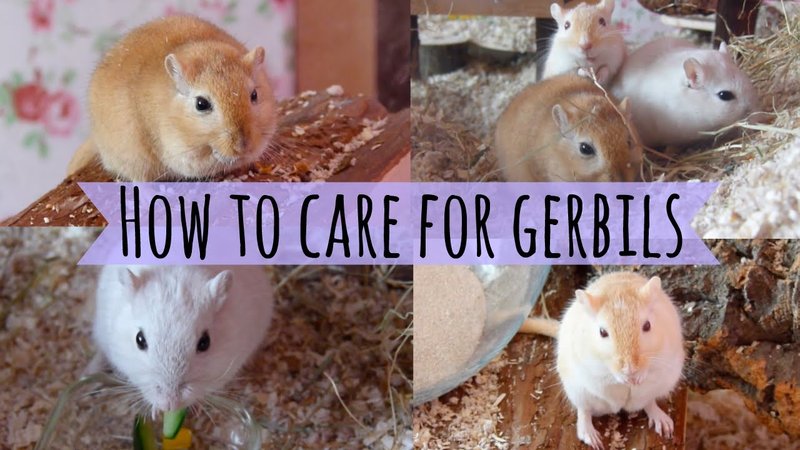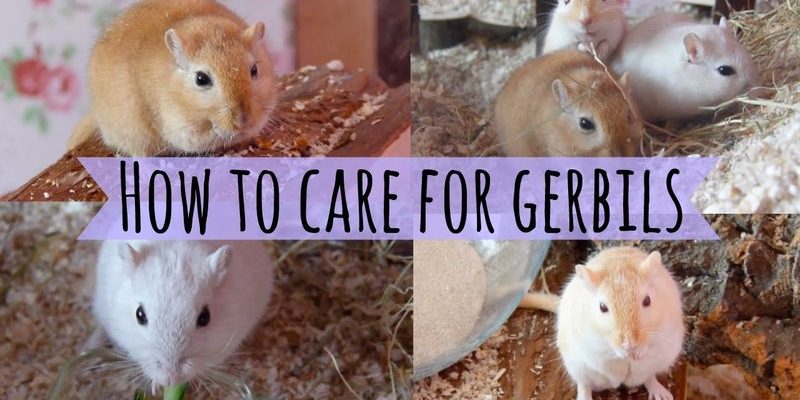
When it comes to small pets, Burmese gerbils have a charm all their own. Imagine a tiny ball of energy with a coat so soft it feels like velvet. These little creatures are curious and full of personality, making them wonderful companions. But like all pets, they need proper care to thrive. If you’ve decided to bring a Burmese gerbil into your home, you’re in for a delightful experience! Think of it like setting up a cozy nest for a new friend—their happiness and health depend on your efforts to provide them with the right environment, diet, and enrichment.
In this guide, I’m going to walk you through everything you need to know about caring for a Burmese gerbil. We’ll explore their dietary needs, how to create a suitable habitat, and ways to keep them entertained. Whether you’re new to the world of small pets or just taking the plunge into owning a gerbil, you’ll find all the information you need right here, served up in a friendly and straightforward way.
Understanding the Dietary Needs of Burmese Gerbils
A well-balanced diet is crucial for the health of your Burmese gerbil. So, what should you feed them? Primarily, gerbils thrive on a high-quality pelleted diet specifically formulated for them. You might find these at your local pet store, and they usually contain a mix of seeds, grains, and protein sources—perfect for their tiny tummies.
Besides pellets, you can add variety with fresh fruits and vegetables. Think of it as adding a splash of color to their plates! Just remember to introduce new foods slowly and in moderation. Some safe options include:
- Carrots
- Broccoli
- Apples (without seeds!)
- Bananas
It’s important to avoid sugary or starchy foods. Treat them like dessert; they’re not an everyday occurrence. Too many snacks can lead to obesity and health issues. Honestly, stick to the basics, and your gerbil will feel better for it!
Setting Up the Perfect Housing
Now that you know what to feed your Burmese gerbil, let’s talk about their living space. Think of their habitat as a miniature home—cozy, safe, and stimulating. A good-sized cage for a pair of gerbils is at least 24 inches long, 12 inches wide, and 12 inches high. Remember, they love to dig and tunnel, so a tank or a wire cage with a solid bottom works best.
When it comes to bedding, you want something absorbent and safe. Consider using aspen shavings or shredded paper, as these materials help control odors and comfort your pet. Layer it about 3-4 inches deep, so your gerbil can dig and burrow to their heart’s content.
And don’t forget to add a few hiding spots and chew toys! Gerbils love to explore and gnaw, so small cardboard boxes, tunnels, or wooden toys will keep them entertained. Plus, these little guys are social creatures, so consider adopting a pair to keep each other company.
Enrichment Activities for Burmese Gerbils
Keeping your Burmese gerbil happy isn’t just about food and shelter; they need mental stimulation, too! Think of enrichment like a fun workout for their brains. There are tons of ways to keep your gerbil engaged:
1. Tunnels and Mazes: Create fun mazes using cardboard tubes or store-bought tunnels. Watching your gerbils explore and navigate their way through will bring you endless joy!
2. Foraging Opportunities: Scatter a few treats around their habitat or hide them in bedding for your gerbils to find. This mimics their natural behaviors and keeps them active.
3. Interactive Toys: Invest in toys that require them to figure things out, like puzzle feeders. These can challenge their minds and make mealtime more exciting.
4. Time Outside the Cage: Supervised playtime outside of their cage can be enriching as well. Just make sure the area is safe and free from hazards.
Honestly, a little creativity goes a long way when it comes to keeping your gerbils entertained. Think of this as building a small amusement park for your furry friends!
Maintaining a Clean Environment
A clean habitat is essential for your Burmese gerbil’s health. Think of it like keeping your home tidy—no one enjoys living in a mess! Aim to clean their cage at least once a week. Here’s how you can do it:
1. Remove Old Bedding: Take out soiled bedding and any uneaten food. This helps prevent odors and keeps your gerbil healthy.
2. Wipe Down Surfaces: Use a safe, pet-friendly cleaner to wipe down the cage walls and accessories. Just make sure everything is dry and free of chemicals before putting your gerbil back in.
3. Replace Bedding: Add fresh bedding to give them a comfy new space. It’s like giving them a mini makeover!
4. Check Food and Water: Always ensure they have fresh food and clean water daily. Refill their water bottle if needed, and clean it regularly to prevent bacteria build-up.
Keeping their home clean not only aids in your gerbil’s health but also reduces smells and enhances their overall living experience.
Common Health Concerns for Burmese Gerbils
Understanding potential health issues is key to being a good gerbil parent. While Burmese gerbils are generally healthy, they can be prone to specific conditions. Some signs to watch out for include:
– Obesity: If your gerbil is getting rounder than usual, it might be a sign they’re overindulging in treats. Adjust their diet and ensure they get enough exercise.
– Dental Issues: Their teeth grow continuously, so providing chew toys is crucial. If you notice any drooling or difficulty eating, it could be a dental problem.
– Respiratory Problems: Watch for signs like nasal discharge or labored breathing. These can indicate a respiratory infection, often caused by poor ventilation or bedding.
– Skin Issues: If you see bald patches or excessive scratching, it might indicate parasites or allergies. Consult a vet if you notice anything unusual.
Staying informed about common health concerns helps you catch problems early. Think of yourself as their health advocate, ensuring they live long, happy lives.
Bonding with Your Burmese Gerbil
Bonding with your Burmese gerbil doesn’t require much—you just need patience and love. These creatures can be timid at first, so take small steps to build trust. Here are some tips:
– Start Slow: Allow your gerbil to get used to your presence before trying to handle them. Sit near their cage and talk softly to them; they’ll soon recognize your voice.
– Hand Feeding: Once they’re comfortable, offer them treats from your hand. This builds a positive association with you and helps them feel safe.
– Gentle Handling: When you’re ready to pick them up, scoop them gently—never grab them from above. Hold them close to your body to provide a sense of security.
– Routine Interaction: Spend a little time with them daily. It could be as simple as watching them play or holding them for a few minutes. The more they see you, the more they’ll trust you.
Honestly, the bond you build will enrich both your lives. It’s a beautiful journey of companionship that rewards you with endless affection.
In conclusion, caring for a Burmese gerbil involves understanding their dietary needs, creating a suitable environment, and providing ample enrichment opportunities. With the right setup and love, your little furball will thrive and bring joy to your life. Remember, it’s all about creating a home where they feel safe, happy, and stimulated. Embrace the adventure, and you won’t regret it!

